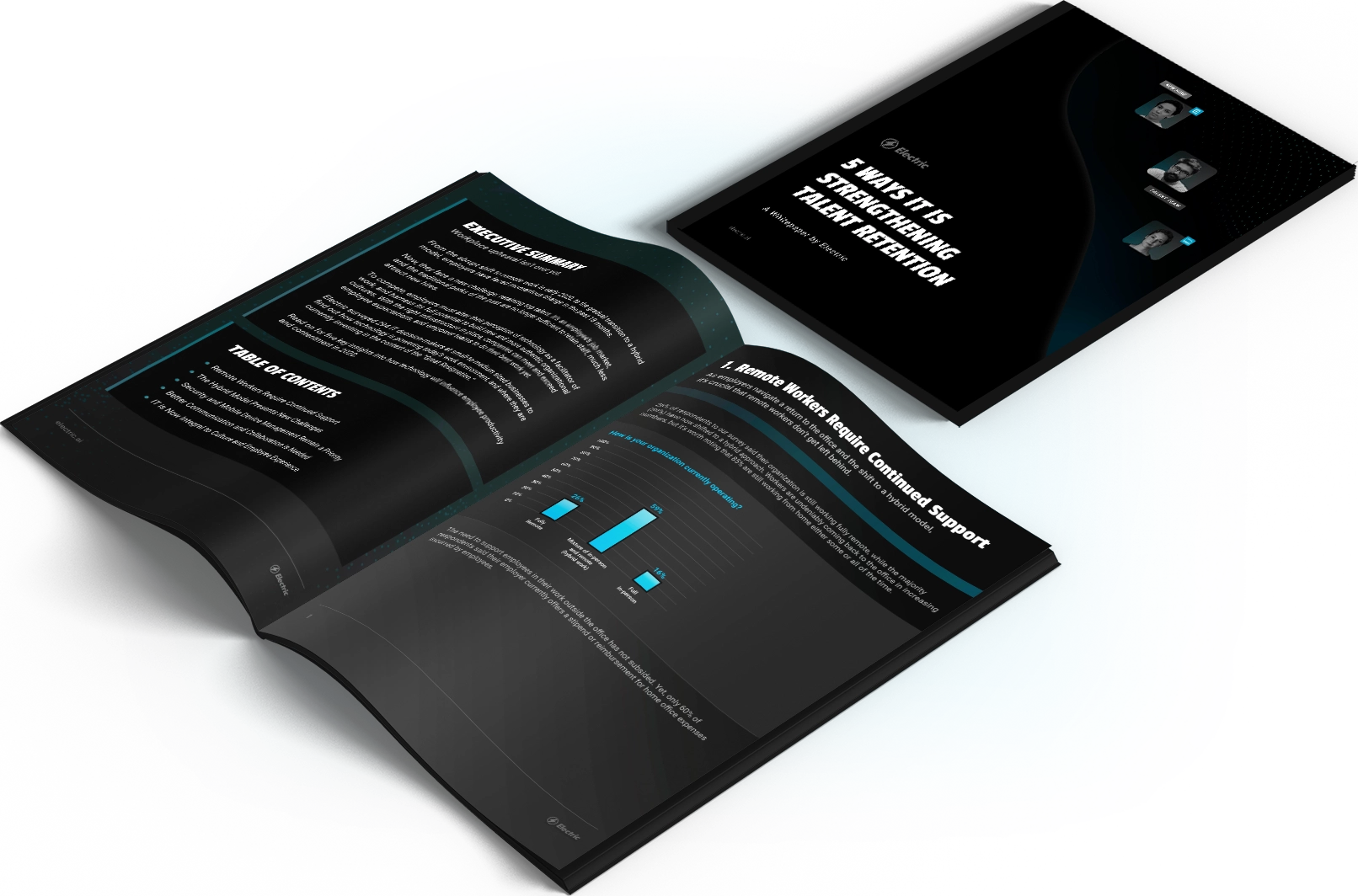
Employee attrition can be costly for small businesses. Losing valuable team members damages growth, productivity, and morale. In the wake of The Great Resignation, many companies are renewing their focus on employee engagement and talent retention, but turnover and attrition rates remain high. This article shares a comprehensive overview of employee attrition – what it is, how it differs from employee turnover, and how to reduce it.
The Meaning of Reducing Attrition
Employee attrition occurs when an employee leaves your company and their position is not backfilled. Reducing attrition simply refers to the actions a company can take to make sure fewer employees leave without replacement. Attrition can be voluntary or involuntary, depending on the reason the employee leaves.
Voluntary attrition is when an employee makes the decision to move on from your organization. This may be due to:
- A new job opportunity at a different company
- Relocation for personal or professional reasons
- Illness or health issues
- Disengagement or burnout
- Retirement
If an employee resigns for one of the reasons above and the company decides not to replace them (or fails to find a suitable candidate) this departure can be defined as voluntary attrition.
Involuntary attrition occurs when an employer decides to let go of an employee. This may be due to:
Restructuring or position elimination
Cost cutting or general workforce reduction
Poor performance or misconduct
In cases of involuntary attrition, the company eliminates the position with no intention of backfilling.
The Difference Between Reducing Employee Attrition and Employee Turnover
Although often used interchangeably, employee turnover and employee attrition are quite different. While attrition refers to vacated roles that are never replaced, turnover occurs when an employee leaves but the company hires a new person to fill that role.
Despite their differences, both of these metrics can offer an insight into the health of your workforce. When both are combined, the overall figure is sometimes referred to as employee churn.

Turning the Great Resignation into the Great Rejuvenation
Failing to invest in a more fulfilling employee experience and ignoring demands for autonomy and flexibility at work will put your business at risk. Gain actionable advice in this webinar on how to improve your workplace wellbeing.
Watch the WebinarUnderstanding Your Employee Attrition Rate and Why It Matters
Your employee attrition rate measures the number of employees leaving your organization, divided by the average number of employees within the organization at a particular time. It can be calculated using the following steps:
- Determine how many employees you had when the year started and ended. Add both of these figures together and divide by two to get your average number of employees.
- Determine how many employees left during that year.
- Determine how many employees were hired during that year.
- Finally, calculate the number of employees that departed as a percentage of your average employee number. The result is your attrition rate.
Here’s the formula for how to calculate your employee attrition rate:
Attrition rate = number of employees that left/average number of employees x 100
Replacing an employee will cost you between 50% to 200% of that particular individual’s annual salary. To find a suitable replacement for a mid-level managerial role with an income of about $60,000, you have to spend somewhere between $30,000 and $120,000. That’s before you consider indirect costs such as lost productivity. If you lose a considerable percentage of your workforce to involuntary attrition, the financial consequences can be significant.
The Top 5 Ways to Reduce Attrition
If your organization is overseeing involuntary attrition for cost saving purposes, that can be normal and valid as a short term measure. However, if you are losing employees to voluntary attrition in their first 90 days and struggling to replace them, you need to take action. Follow these top 5 ways to reduce attrition:
1. Optimize Recruitment
The first step in reducing 90 day attrition is to actively replace departing employees. Create clear and specific job descriptions for the roles in question and outline the value and experience the ideal candidate will bring to the business. If you are struggling to attract suitable candidates, try advertising the role in new outlets to improve reach, and consider eliminating unnecessary requirements. For example, many employers no longer require a third level degree if the candidate has equivalent experience. When you do recruit new team members, don’t overlook the importance of the onboarding experience to avoid high rates of turnover in the employee’s first 3-6 months.
2. Offer Career Development Opportunities
Contrary to what many employers believe, pay isn’t always the leading cause of employee turnover and attrition. Today’s employees want to feel engaged at work, and most intentionally seek out fulfilling careers with opportunities for personal growth and skill development. A 2020 Work Institutes report showed that 20% of employees left their jobs due to a lack of promotional or advancement opportunities. To counteract disengagement in the first 90 days, invest in career progression plans, continuing education, and mentorship.
3. Prioritize Employee Wellness
A recent survey suggests that 62% of workers consider wellbeing support as a top priority when looking for a new job. Prioritizing employee wellness also ensures your workers are healthier, happier, and less likely to need extended periods of leave due to illness or stress. Review the health benefits on offer to your employees and invite feedback on wellness initiatives. Mental health supports, flexible hours, and paid vacation policies are just some of the offerings that employees might find valuable, all of which will help to reduce burnout and boost productivity.
4. Conduct Employee Exit Interviews
Conducting exit interviews can help you identify recurring trends and fix the underlying cause of high rates of turnover. Whether it’s toxic management, unreasonable workloads, or a lack of career progression, the first step in rectifying a problem is to identify it. Make sure to create a safe and open space for employees to provide feedback, and allow them to speak to an impartial member of your HR team instead of their direct manager. By gaining insights into why employees are leaving your company, you will be positioned to further improve your retention strategies.
5. Improve Employee Experience with IT
The hybrid work model is here to stay. According to the Remote Work & Compensation Pulse Survey, 44% of workers favor hybrid working, while 48% expressed a desire to be fully remote. To facilitate this demand, you need to invest in IT infrastructure that delivers a seamless employee experience from any location. That means best-in-class collaboration and communication tools, access to remote IT support, comprehensive Mobile Device Management, and the ability to access systems, apps, and resources from outside the office. All of these steps help to improve employee engagement and productivity in remote and hybrid environments, as well as minimizing technology frustrations.

5 Ways IT Strengthens Talent Retention
In a competitive market for talent, employers must alter their perception of technology as a facilitator of work, and harness its full potential to build new and more authentic organizational cultures.
Read the ReportProvide Employees with the Resources They Need
The causes of employee attrition can be both external and internal. While you can’t always control external factors, it’s important to proactively tackle internal issues like frustrating IT experiences. If you struggle with managing employee onboarding and offboarding, device procurement, credential management, or user access permissions, Electric can help. Get in touch to learn how we support HR and People Teams to simplify manual tasks and manage all of your IT in one place.



